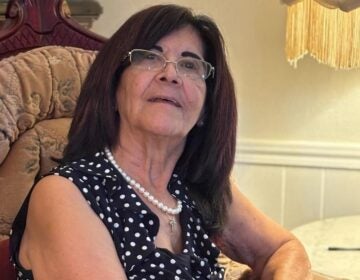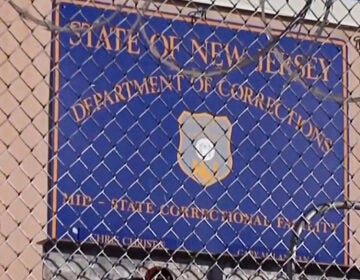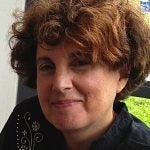Princeton exhibit highlights threats to the world’s water suppy
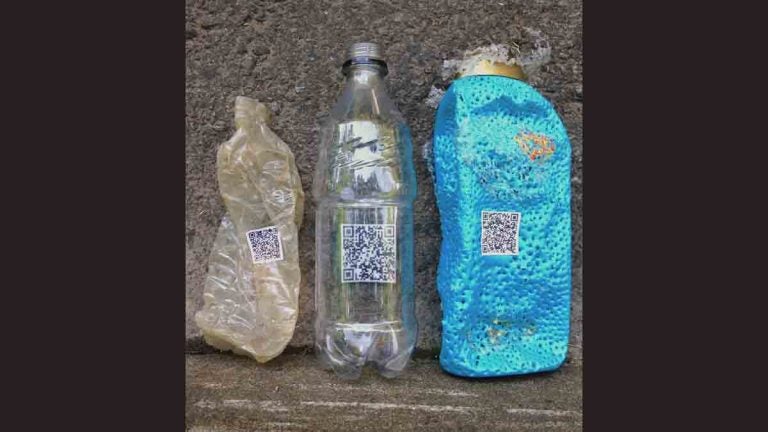
Eva Mantell
Princeton Artists Alliance has used art as commentary on social and political issues for 25 years. The artists are taking on “The Politics of Water” at the Bernstein Gallery, Woodrow Wilson School, through December 9.
“When water is scarce, we have to use it intelligently and recycle it as much as possible,” says Peter Jaffe, Princeton University Professor of Civil and Environmental Engineering and Associate Director for Research, Andlinger Center for Energy and the Environment, who spoke at a November 9 panel. “In general we just can’t look at water as a medium to carry away our waste, including excess nutrients, but understand how to preserve it for its ecological services and a key resource for humans.”
Safe water fulfills a fundamental human right, yet 663 million people worldwide lack access to it. “You cannot solve poverty without solving water and sanitation,” says actor Matt Damon, who co-founded water.org, a non-profit that seeks to aid developing nations access drinking water.
Lack of access is a major economic obstacle. When a community spends most of its time in quest of water, there’s little time left for going to school or work.
Right here in the U.S., we have ongoing water crises. Most recently, Hurricane Matthew flooded lagoons in North Carolina, mixing industrial pig farm sludge into the water stream, spreading E. coli, salmonella, cryptosporidium and other bacteria that can lead to serious illness or death if spread to humans.
The $3.7 billion Dakota Access Pipeline project threatens water supplies, and last year’s lead crisis in Flint, Michigan contaminated Flint’s water supply. California’s punishing drought threatened not only the most populous state but the nation’s food supply. And as bottled water outsells soft drinks in the U.S., plastic waste has become a major environmental problem.
The 22 “Water” artists respond to such issues as climate change, dried up lakes and riverbeds, and how local economies and natural habitats have been affected. Some have focused on the degradation of our oceans and waterways by human pollution. Another focus has been the level of conflict or cooperation between neighboring states with growing populations as they negotiate access to a limited water supply.
Eva Mantell was preoccupied by questions about art and activism. “How does art carry a message?” she ponders. “How does it move between art and idea and how far can an artist go to one extreme before one of these two categories fritters away?” Mantell’s mixed media interactive installation (shown in top photo) uses clay, plastic and antique glass bottles with QR codes that link to articles about imperiled lakes.
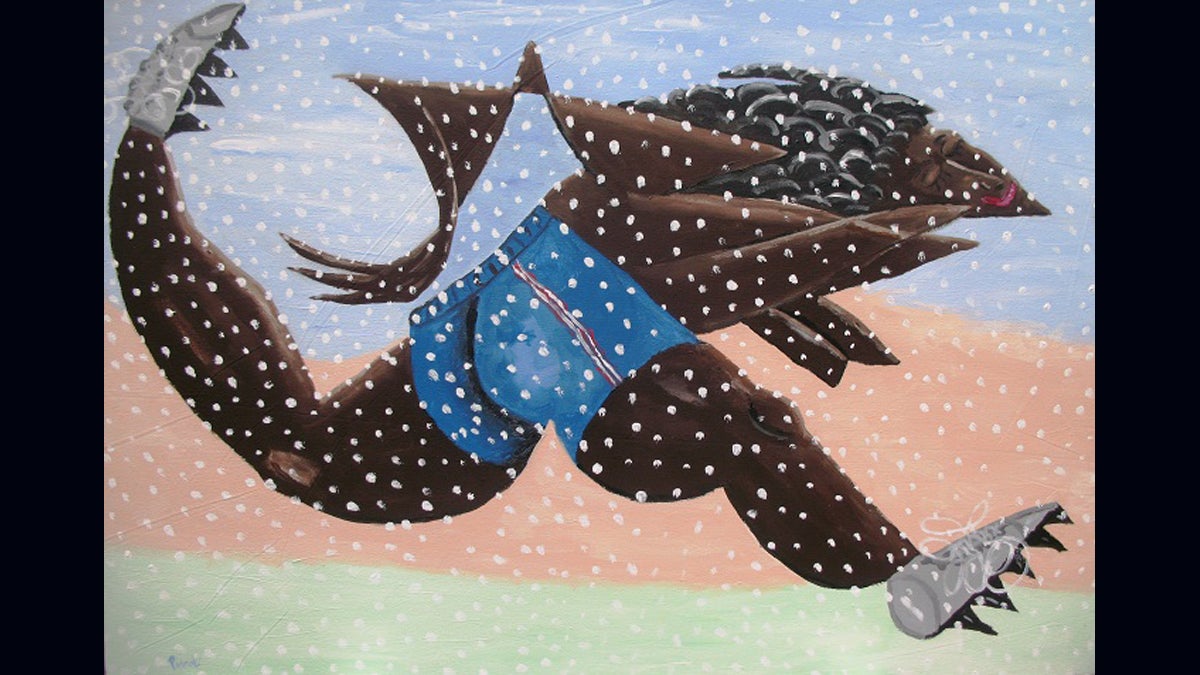
Judy Tobie’s “Wave” is made from shredded currency.

Madelaine Shellaby’s digital print shows the Lake Peligre Dam in Haiti. In 1956 it caused flooding that destroyed the livelihood of farming communities. Shellaby cofounded Konekte Princeton Haiti to improve the lives of children and their communities through educational Initiatives, organizing groups of volunteers to rebuild schools.
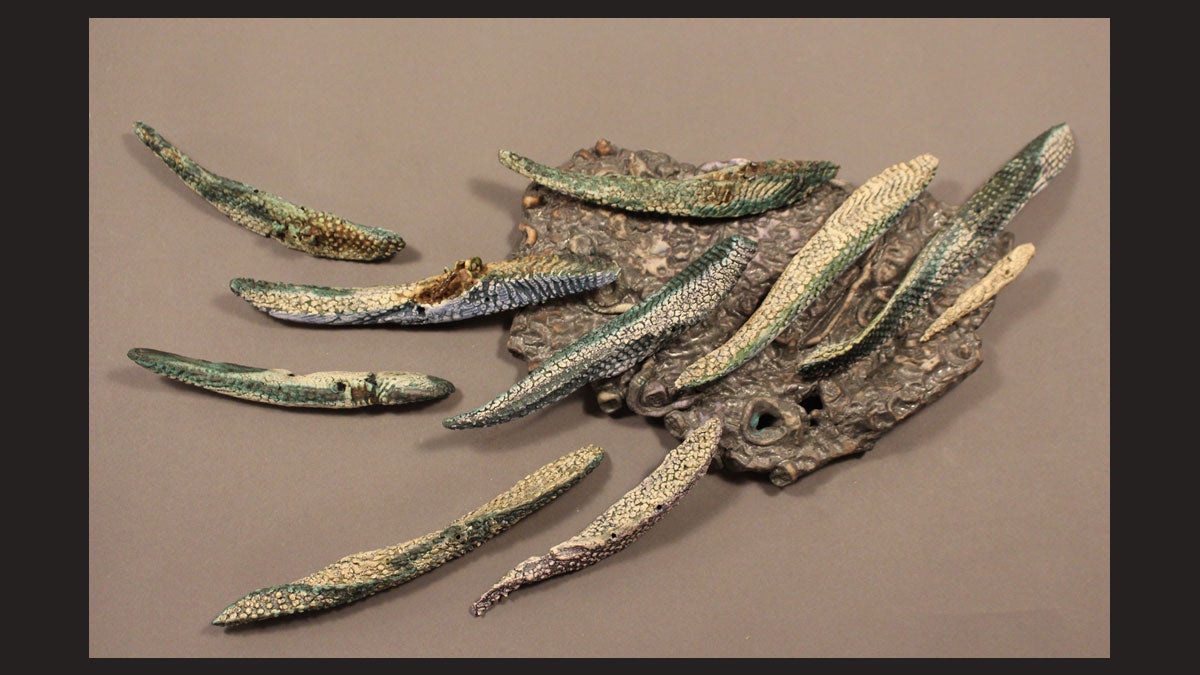
Shellie Jacobson tackles the topic of micro beads—those plastic particles in certain cleansing products—in a work with ceramic fish. “This struck a very personal chord with me,” she says of the fish who suffer from ingesting the micro beads. During her childhood in Buffalo, N.Y., “We swam in Lake Erie and ate fish from the lake. It was a source for recreation.”

Lucy Graves McVicker contributed three paintings: “1900,” “2000” and “2100.” “It was shocking to hear about other nations having to import bottled drinking water, or having a law against catching rain water,” she says. “Then I read about the section of the Pacific Ocean where trash is dumped, and that, perhaps, is where I got the idea to paint our fragile ocean in three different centuries.”
_______________________________________
NJ Spotlight, an independent online news service on issues critical to New Jersey, makes its in-depth reporting available to NewsWorks.
WHYY is your source for fact-based, in-depth journalism and information. As a nonprofit organization, we rely on financial support from readers like you. Please give today.


